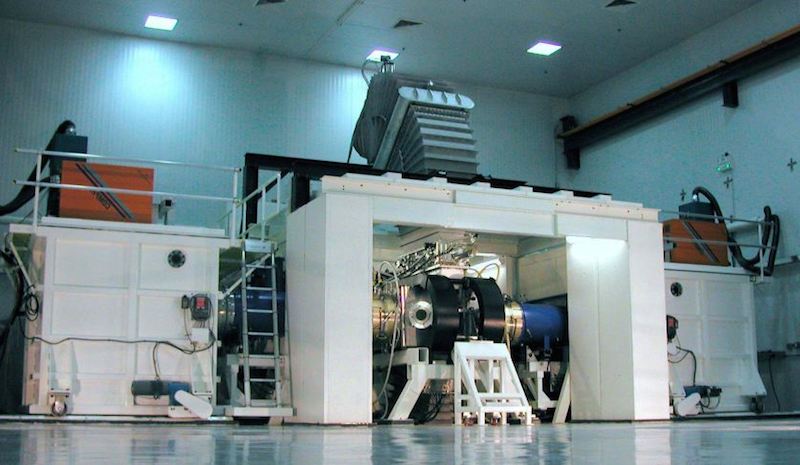2 Million Mph! Super-Fast Laser Sets Record

How fast is really fast? If you're going by the U.S. Navy's standards, it's about 2.25 million mph (3.6 million km/h).
That's how fast the Navy's giant Nike laser can move a "target" (i.e., a tiny capsule about the size of a peppercorn), according to the U.S. Defense Department. The laser pulses a super-strong beam of electrons through a mixture of gases. This speeds up the electrons and makes it possible for this beam of energy to move things at extremely high speeds. In fact, the laser moves things so quickly that it recently earned a Guinness World Records title for achieving "Highest Projectile Velocity," a distinction previously held by researchers in Japan.
While the laser's world record title isn't as easy to digest as some others — say, "World's Biggest Hot Dog" — it's still a significant achievement. The laser is at the forefront of clean energy, according to Guinness World Records officials, enabling researchers to study nuclear fusion as an environmentally friendly energy alternative.
Stationed at the U.S. Naval Research Laboratory in Washington, D.C., the fluoride krypton (KrF) laser works by heating up a fuel target, something that researchers with the project call a "thin plastic foil." Typically, the fuel targets used for confined nuclear fusion reactions contain a mixture of deuterium and tritium, two hydrogen isotopes, but the U.S. Navy Lab doesn't specify what kind of fuel target they used for their experiments with the Nike laser.
When the laser heats up the tiny piece of plastic foil, the target accelerates to a speed of up to 2.25 million mph (3.6 million km/h). To put that into perspective, it's over twice as fast as the fastest-spinning star in the galaxy, which rotates around at a dizzying pace of 1 million mph (1.6 million km/h).
The fuel target travels a fraction of an inch (less than 1 millimeter) before arriving at its destination (its goal is to collide with another, stationary piece of foil). The impact generates an enormous amount of pressure, which compresses the fuel target. In other words, the piece of plastic foil becomes extremely dense and extremely hot, setting off fusion reactions that can be used to produce energy.
If this process sounds complicated, that's because it is. Known as inertial confinement fusion, it's one of several processes used to initiate nuclear fusion, the type of reaction that powers both stars and hydrogen bombs.
Sign up for the Live Science daily newsletter now
Get the world’s most fascinating discoveries delivered straight to your inbox.
The set of experiments that won the U.S. Navy its Guinness World Record title were performed nearly five years ago, according to Armed with Science, the official blog of the U.S. Department of Defense. However, researchers at the Navy Lab just recently received their certificate from Guinness World Records officials.
Since then, Navy researchers have actually increased the speed at which the laser can move its target. The new "really fast" is about 2.6 million miles per hour (4.2 million km/h), according to the researchers.
Follow Elizabeth Palermo @techEpalermo. Follow Live Science @livescience, Facebook & Google+. Original article on Live Science.

Elizabeth is a former Live Science associate editor and current director of audience development at the Chamber of Commerce. She graduated with a bachelor of arts degree from George Washington University. Elizabeth has traveled throughout the Americas, studying political systems and indigenous cultures and teaching English to students of all ages.









